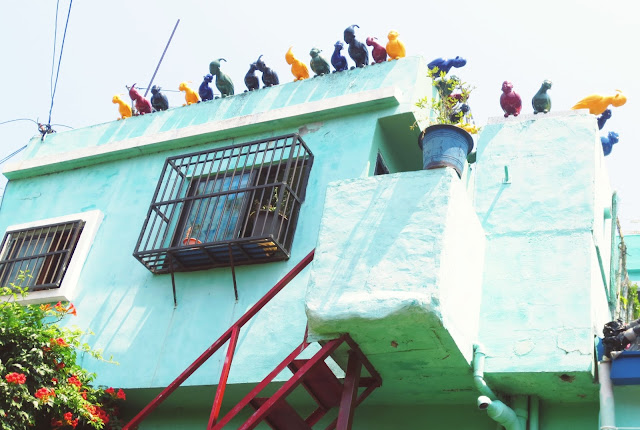Saturday, August 10, 2013
Today we ventured over to Gamcheon Culture Village: a quirky art-filled suburb in Busan that has emerged from the poverty of the war to become one of Busan's most unique areas.
Before we made our way to Gamcheon, I read a Busan Haps article where I learned that back in the 1940's only about 20 houses were on this hill side. But that number grew substantially at the beginning of the Korean War, in 1950.
According to the article, as war refugees fled their homes for a relatively safe place in Busan: the only area of the peninsula that remained free from fighting. Within the first year of war, Busan's population grew from 880,000 to 1.4 MILLION. Half a million people homeless, needing a place to live, and fast. Over 4,000 people moved from the crowded port of Jagalchi Fish Market to Gamcheon.
They makeshifted homes only using scrap iron, wood and rocks.
The Lego-like homes that we saw were all thanks to a man named Chol-je-Cho.
This guy founded a religion called Taegukdo. This religion believes that the Taeguk, or the yin yang on their flag, represents the meanings of life and the universe.
Also, the Korean Flag has a cool meaning.
Korean Flag also known as Taegeukgi has three parts.
The white background symbolizes "cleanliness of the people". The Taegeuk , the ying yang, represents the origin of all things in the universe, holding the two principles of yin and yang in perfect balance—the former being the negative aspect rendered in blue, and the latter as the positive aspect rendered in red. Together, they represent a continuous movement within infinity, the two merging as one.
Photo Credit: Stephen Bay
Back to Taegukdo.
Taegukdo was practiced after oppression and the overthrow from the Japanese occupation. Cho and his followers persuaded almost 90% of the refugees living in Gamcheon with nice gifts of rice and candy.
With Cho's help, the residents in Gamcheon used their earnings to rebuild their village. In 1955 the area became known as the Taeguk Village and Cho moved the religion's headquarters there. We actually saw a pretty large (relative to the small homes in the village) religious compound located in the middle of the village.
The best part of the village is wondering through these small paths. You never know where it will head or what you might see next.
We noticed every house had its own big blue water tank on their roof.
Now a days the current 10,000 residents are used to the heavy flow of tourist, photographers, and filmmakers. It was so enjoyable to adventure through these small brightly colored houses.
Until next time.
xoxo
Jestine and Bobby
















No comments:
Post a Comment